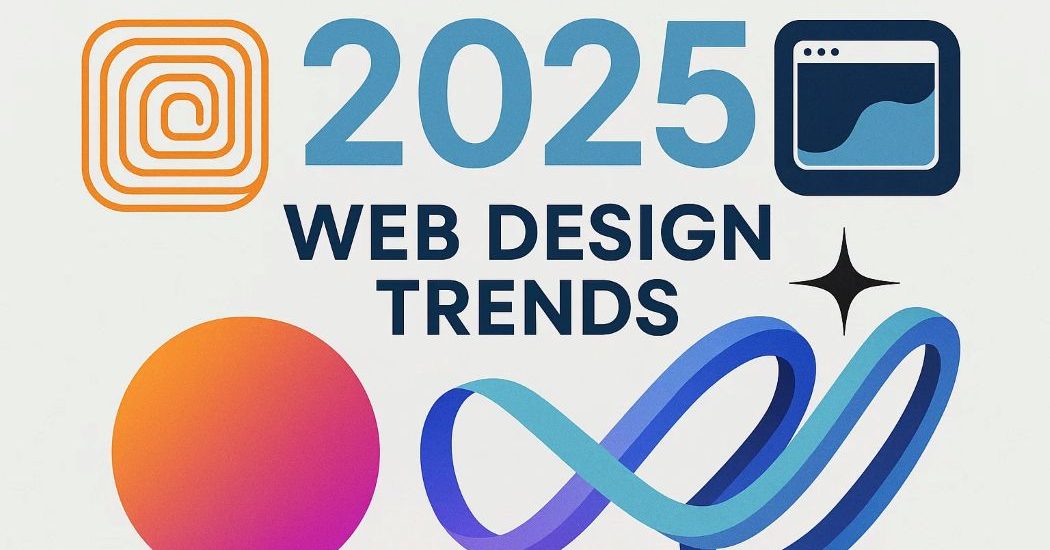Future web design is all about speed, intelligence, and immersive user experiences. As we move into 2025, websites must adapt to changing user expectations and emerging technologies. Whether you run a personal blog, online store, or business site, embracing the latest design trends will help you stay competitive, improve user retention, and boost your search engine rankings.
Let’s explore the top web design trends that will define 2025—and how you can future-proof your website by implementing them today.
🎨 1. Minimalism Meets Micro-Interactions
Gone are the days of cluttered pages and information overload. In 2025, clean designs with interactive elements are dominating. Users want simple layouts, but they also expect engaging experiences. Subtle animations, hover effects, and scroll-triggered movements add life to minimalist pages without distracting from the message.
Why it matters: These micro-interactions improve user engagement, reduce bounce rates, and make your site feel intuitive.
🧠 2. AI-Enhanced User Experiences
Artificial Intelligence is playing a growing role in shaping web design. From personalized content delivery to AI-powered chatbots, websites are becoming smarter and more responsive to user behavior. In 2025, AI tools can analyze visitor intent in real time and customize layouts, product recommendations, or even entire landing pages.
Why it matters: Personalization increases user retention and conversions.
🌗 3. Dark Mode as a Standard
Once a nice-to-have feature, dark mode is now expected. Users enjoy the reduced eye strain, and websites benefit from a sleek, modern appearance. In 2025, offering a light/dark toggle is a must for accessibility and user satisfaction.
Why it matters: Improves usability and gives users control over their experience.
🌀 4. Scroll-Triggered Storytelling
Parallax scrolling and storytelling techniques make web content feel like an interactive journey. Instead of static pages, users scroll through animations, transitions, and engaging narratives. It’s a powerful way to connect emotionally with your audience.
Why it matters: Storytelling improves brand recall and time on page—two crucial SEO factors.
💡 5. Voice and Visual Search Optimization
With the rise of smart devices, voice search and visual search are becoming standard ways to explore the web. Websites in 2025 must be optimized for spoken queries and include structured data to support voice SEO. Similarly, image-based search tools are gaining popularity in retail and fashion sectors.
Why it matters: Enhancing accessibility and discoverability boosts overall traffic.
🔄 6. Fluid & Responsive Design for All Devices
Mobile-first is no longer enough. In 2025, users access websites from foldables, wearables, smart TVs, and tablets. Your layout must fluidly adapt to any screen size while maintaining speed and function.
Why it matters: Google prioritizes mobile usability, and poor responsiveness affects both rankings and user experience.
🔐 7. Built-In Privacy and Trust Signals
Users are more privacy-conscious than ever. Websites now display GDPR badges, cookie notices, SSL certificates, and transparent policies front and center. Trust-building visuals—like testimonials, trust seals, and verified badges—are essential.
Why it matters: Builds user confidence and aligns with legal requirements.
🎨 8. Custom Illustrations and 3D Graphics
Stock images are fading. Custom 3D illustrations, AR previews, and SVG animations help websites stand out. These visual elements give your brand a distinct identity and improve memorability.
Why it matters: Enhances branding and sets your design apart from competitors.
🧩 9. Modular Design Systems
In 2025, design systems are becoming more modular and component-driven. Instead of building page-by-page, developers use pre-designed blocks that can be reused and reconfigured.
Why it matters: Speeds up development, ensures consistency, and simplifies A/B testing.
📈 10. Accessibility Is Non-Negotiable
Designers are prioritizing inclusive design to ensure everyone can navigate digital spaces—regardless of disabilities. Use high contrast, keyboard navigation, and screen reader compatibility. Accessibility is now a core SEO factor.
Why it matters: Expands your reach and protects your site from legal risks.
🧭 Final Thoughts
Keeping your website updated isn’t just about looks—it’s about performance, usability, and relevance. Adopting the 2025 web design trends ensures you create a digital presence that resonates with users and ranks well on search engines.
Whether you’re launching a new site or revamping an old one, now is the time to align your design strategy with the future. These trends don’t just future-proof your site—they elevate your entire brand experience.





